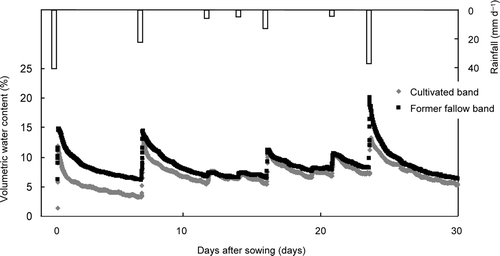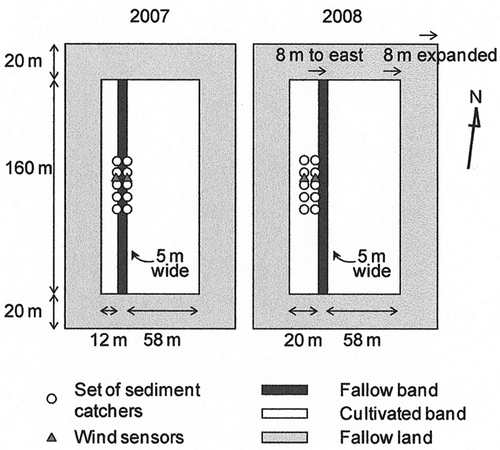Figures & data
Figure 1. Outline of the “Fallow Band System”. A, B, and C refer to the steps explained in the main text.

Table 1. Data of wind erosion events in 2008
Figure 3. Cumulative loss of (a) soil particles and (b) coarse organic matter (COM) from the cultivated band and fallow band. Arrows represent the sowing date (on June 19, 2008). Pearl millet was harvested at the middle of October.
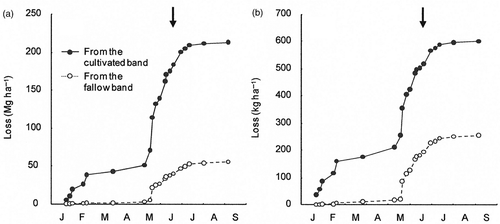
Figure 4. Trapping efficiency of the fallow band for incoming (a) soil particles and (b) coarse organic matter (COM). Arrows represent the sowing date (on June 19, 2008). Pearl millet was harvested at the middle of October.
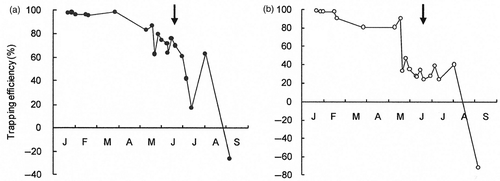
Figure 5. Cumulative amount of trapped (a) soil particles and (b) coarse organic matter (COM) in a hectare of fallow band. Arrows represent the sowing date (on June 19, 2008). Pearl millet was harvested at the middle of October.
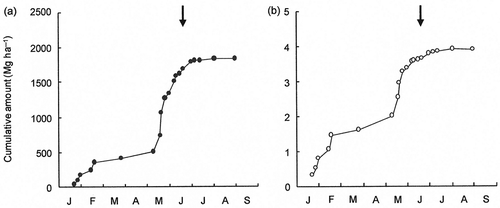
Figure 6. Change in surface elevation of the fallow band. The zero in the vertical axis is the average elevation value measured before wind erosion.
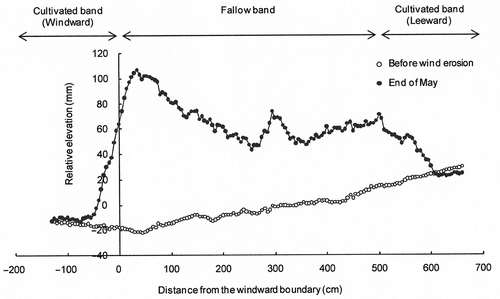
Figure 7. Weight loss of coarse organic matter (COM) in litter bags during cropping season at depths of 0.02, 0.05, and 0.10 m. Error bars indicate standard error. Mean values with different letters are significantly different at the P < 0.05 significance level.
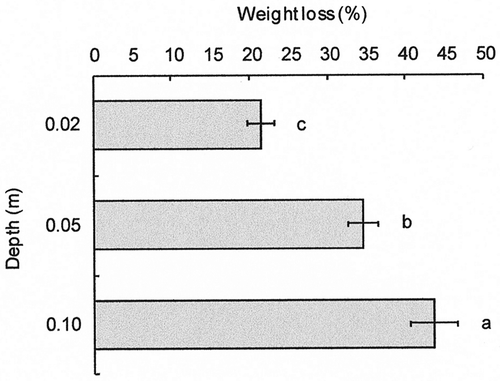
Figure 8. Total carbon dioxide (CO2) emission during the cropping season in the cultivated band and former fallow band. Error bars indicate standard error. Mean values with different letters are significantly different at the P < 0.05 significance level.
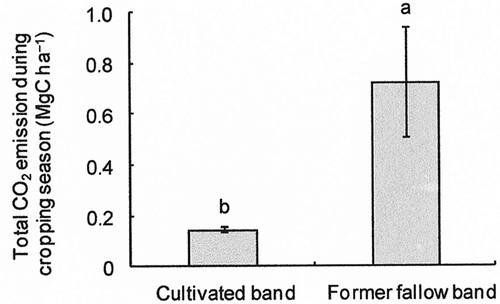
Figure 9. Bulk density of trapped materials in the former fallow band and that of the topsoil at a depth of 0 to 0.05 m in the cultivated band. Error bars indicate standard error. Mean values with different letters are significantly different at the P < 0.05 significance level.

Figure 10. Particle size distribution of trapped soil particles in the former fallow band and topsoil at a depth of 0 to 0.05 m in the cultivated band. Error bars indicate standard error.

Figure 11. Field hydraulic conductivity in the former fallow band and in the cultivated band. Error bars indicate standard error. Mean values with different letters are significantly different at the P < 0.05 significance level.
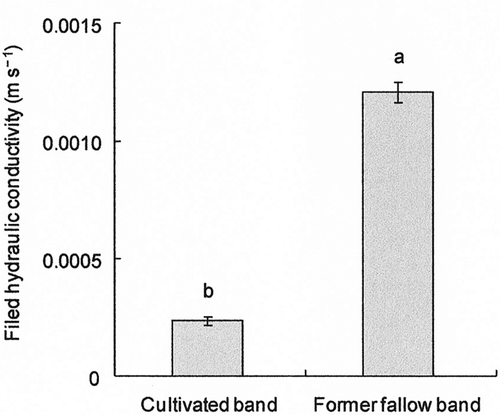
Figure 12. Volumetric water content during the early cropping season in surface soil at a depth of 0 to 0.3 m in the former fallow band and the cultivated band. Rainfall data were collected at the meteorological station at the Internal Crops Research Institute for the Semi-Arid Tropics West and Central Africa (IWCA) located approximately 1 km from experimental plots. Pearl millet was sowed on June 19, 2008.
